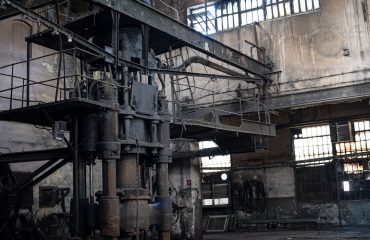body {
font-family: sans-serif;
line-height: 1.6;
}
h1, h2, h3 {
color: #333;
}
h1 {
font-size: 2.5em;
}
h2 {
font-size: 2em;
}
h3 {
font-size: 1.5em;
}
The steel industry operates on a foundation of rigorous standards, ensuring the quality, safety, and reliability of its products. At the heart of this system lies ASTM International (formerly known as the American Society for Testing and Materials), a globally recognized organization that develops and publishes voluntary consensus standards for materials, products, systems, and services. Compliance with ASTM standards is paramount for steel producers seeking to maintain credibility, meet customer expectations, and avoid potential liabilities. This comprehensive guide delves into the crucial aspects of ASTM compliance in steel production.
Understanding ASTM Standards for Steel
ASTM International offers a vast library of standards specifically addressing steel production. These standards encompass various aspects, from the chemical composition and mechanical properties of different steel grades to the testing methods used to verify compliance. Key standards frequently referenced include those defining tensile strength, yield strength, elongation, hardness, impact resistance, and chemical analysis. For example, ASTM A36 covers structural steel, while ASTM A572 outlines high-strength low-alloy structural steel. Understanding the specific ASTM standard applicable to a particular steel grade is fundamental to ensuring compliance.
Navigating the multitude of ASTM standards can be challenging. Steel producers often rely on internal experts and external consultants to interpret and implement the relevant standards effectively. Staying updated on revisions and new standards is crucial, as these updates often reflect advancements in technology and safety considerations.
Essential Testing Methods and Procedures
ASTM standards don’t merely define properties; they also outline the precise testing methods used to determine if a particular steel grade meets the specified requirements. These methods are rigorously detailed, ensuring consistency and comparability of results across different laboratories and manufacturers. Common tests include:
- Tensile testing: Determines ultimate tensile strength, yield strength, and elongation.
- Hardness testing: Measures the resistance of the steel to indentation, often using Rockwell or Brinell scales.
- Impact testing: Evaluates the steel’s ability to absorb energy under impact, typically using Charpy or Izod tests.
- Chemical analysis: Determines the precise chemical composition of the steel, ensuring it conforms to the specified grade.
- Bend testing: Assesses the ductility and formability of the steel.
Accurate and reliable testing is crucial for demonstrating ASTM compliance. Laboratories must be properly equipped, calibrated, and staffed by competent personnel. Regular audits and quality control measures are essential to maintain the integrity of the testing process.
Implementing Robust Quality Control Measures
ASTM compliance is not a one-time event; it requires a comprehensive and ongoing commitment to quality control throughout the entire steel production process. From raw material inspection to finished product testing, every stage must adhere to strict protocols. This includes:
- Raw material verification: Ensuring that the incoming raw materials meet the required specifications.
- Process monitoring: Continuously monitoring the various stages of steel production to identify and correct any deviations from the established parameters.
- In-process testing: Conducting tests at various stages of production to detect potential problems early on.
- Statistical process control (SPC): Employing statistical methods to monitor and control the production process, minimizing variability and ensuring consistency.
- Corrective and preventive actions (CAPA): Implementing a system for identifying, investigating, and rectifying any non-conformances.
A robust quality control system is essential for preventing defects and ensuring that the final product consistently meets ASTM standards.
Certification and Accreditation: Proving Compliance
Demonstrating ASTM compliance often involves obtaining certifications and accreditations from independent third-party organizations. These organizations verify that a steel producer’s processes and products meet the specified standards. Certification provides assurance to customers and regulatory bodies that the steel is of high quality and meets the required specifications. This can be a significant advantage in competitive markets and is often a requirement for specific projects or applications.
Accreditation of testing laboratories is equally crucial. Accredited laboratories adhere to rigorous standards, ensuring the reliability and validity of their testing results. Customers can have confidence in the data generated by accredited laboratories, which strengthens the credibility of the ASTM compliance claims.
The Importance of Adherence to ASTM Standards
Adherence to ASTM standards is not merely a matter of compliance; it’s a commitment to safety, quality, and reliability. Failure to comply can lead to several serious consequences:
- Product failure: Non-compliant steel may fail under stress, leading to structural damage, accidents, and injuries.
- Reputational damage: Failure to meet ASTM standards can severely damage a company’s reputation and erode customer trust.
- Legal liabilities: Non-compliance can result in legal action and significant financial penalties.
- Market access restrictions: Many countries and jurisdictions require ASTM compliance for certain steel products, limiting market access for non-compliant producers.
By prioritizing ASTM compliance, steel producers demonstrate their dedication to producing high-quality, safe, and reliable products, ensuring the continued success of their businesses and contributing to the safety and integrity of numerous structures and applications.
Tags: ASTM Steel, Steel Standards, Steel Compliance, Quality Control Steel, Steel Testing




